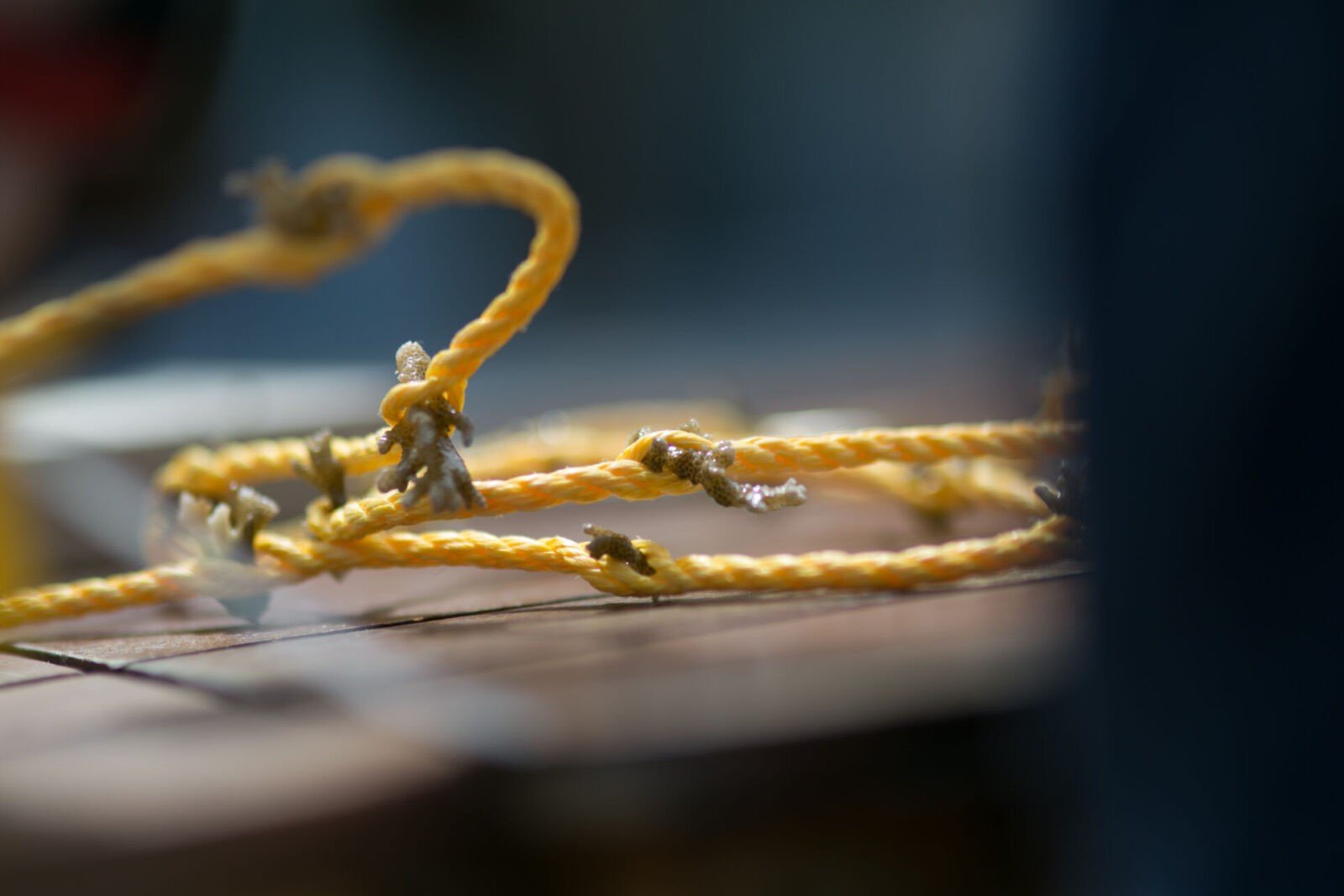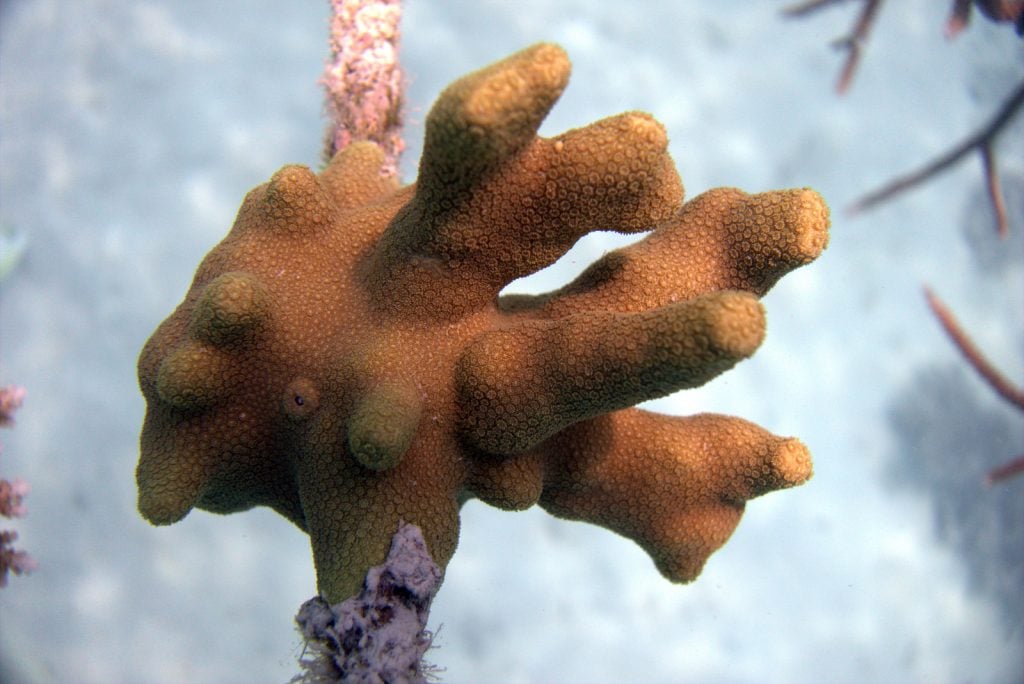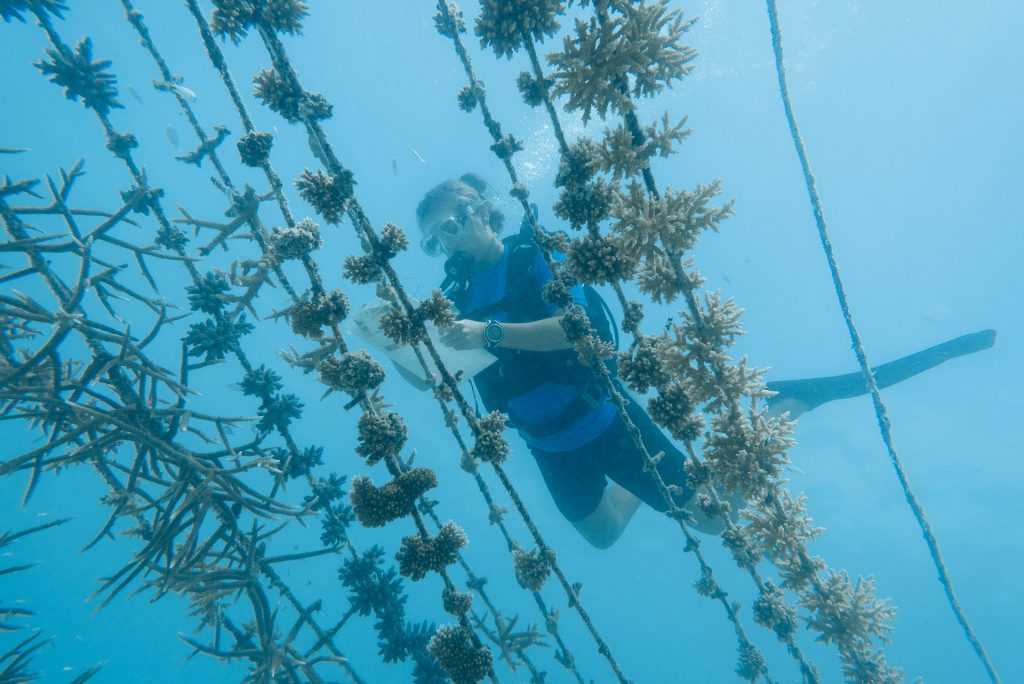Ecological Restoration is the process of assisting the recovery of a damaged, degraded or destroyed ecosystem.
Reef Restoration and Rehabilitation is a relatively new branch of science. It is something which is practiced all around the World, using various methods. Through the many techniques utilized, different researchers have experienced different levels of success, and much is still to be learnt. The main aim of reef rehabilitation is to achieve an ecosystem state as similar to the original one as possible. This means using the same coral species as were present in the original system. This will then attract the same species of fish as before, and so the system will not be knocked out of balance. However, we cannot control natural processes, and so often a replacement ecosystem occurs, which may differ slightly from the original. Often times, this may be better than just leaving the ecosystem to recover by itself, as new organism groups like algae may replace what once was a dominant coral species and phase shifts occur, leading the system further and further away from the original.

Restoration efforts are being achieved through many different methods. We can begin by splitting the attempts into Asexual and Sexual methods. We can then further disseminate in situ and ex situ nurseries, and finally look at the differences between Substrate Restoration and Artificial reef types.
Asexual vs Sexual
Being a colonial animal which can employ both reproductive strategies, scientists work to find out not only the logistically easiest and most successful way to recover a system, but also the most natural and ecologically sound way. Asexual methods are the most common, and it is the method that we have chosen here at Gili Lankanfushi. Asexual reproduction is the strategy of cloning existing genetic material to create a new individual. Corals do this through fragmentation and through budding. When a piece of coral is broken off, it will continue to grow as a separate colony, but the genetic material is identical to that of the parent colony. Breaking off small pieces or ‘frags’ or coral and re-planting them on a restoration site is asexual restoration. As the coral grows, the polyps ‘bud-off’ and copy themselves- this is also asexual reproduction, but not the strategy we employ for reef restoration. Whilst this method is easy, and can be used to restore an area relatively quickly, it does come with its downsides. Firstly, we must consider where the fragments are coming from. We must be sure not to destroy a ‘donor reef’ by breaking off too many fragments in an effort to restore an area that might not be successful. This can do more harm than good to our reef systems as a whole. By using this method, genetic variation is also compromised. We are using existing genetic material to make a new reef, and if fragments are only taken from a small spatial area, we can create a monoculture of genetically identical corals, which may lead to problems in the future if sexual reproduction is to be successful downstream. Luckily for us, the One Palm Island reef seems to have a good larval supply and high recruitment rates- the main problem is the stability of the substrate.

Nursing
After the decision has been made as to whether to use asexual or sexual methods, we then must decide whether to nurse the corals and where to do this. There are many different nursing techniques. A researcher must decide whether to nursein situ (in the ocean), or ex situ (in a laboratory). How much control you have over the fragments can be vital to survival rates. In an ex situ nursery, corals are cared for in 100% controlled conditions, and once they’re a certain size, are transplanted onto the restoration area. Corals nursed in situ are at risk of natural changes in condition- be it temperature, wave action or predation. However, they are already in the ocean, and so are easier to move to the restoration area. Researchers take great care to increase the amount of control they have over their in situ nurseries. For example, the height of the nursery over the substrate, keeping it away from the reef to avoid predation, keeping it below the surface to avoid wave action are all tools utilised to maintain control. There are many different types of nursery. Ours is a rope nursery, a modified version of Levy’s floating nursery trialed in Philippines. As far as we know, the largest rope nursery in the World is currently in the Seychelles off Praslin Island, a project funded by USAID and run by Dr Sarah Frias Torres.

Substrate or Artificial Restoration
The area of transplantation will be chosen depending on the needs of the researcher and the reasons behind the project. Two methods are employed. We can either create an artificial reef or restore existing reef substrate. Artificial substrate is created most commonly using metal frames, upon which coral fragments are attached- usually with cable ties. Because these are normally placed on sandy bottoms where there was previously no reef, it is debatable as to whether we can call this reef ‘restoration’ or whether we should simply call it ‘habitat creation’. Eventually the corals secrete over these frames, and a new reef is created. In the Maldives, this is the most common form of coral gardening and habitat creation. It provides new substrate for future corals to grow and attracts in lots of fish and invertebrate life, creating a substitute habitat.
Substrate restoration is used when the available reef substrate is degraded or damaged, and restoration efforts are concentrated on transplanting corals onto existing hard substrate that may have once housed a healthy coral reef. The latter is what we are doing at Gili Lankanfushi. As we already have reef substrate, we have no need for artificial framing, and so we will use flexible ropes to nurse our corals and transplant them onto the degraded one palm island reef system in an attempt to recreate the original ecosystem.